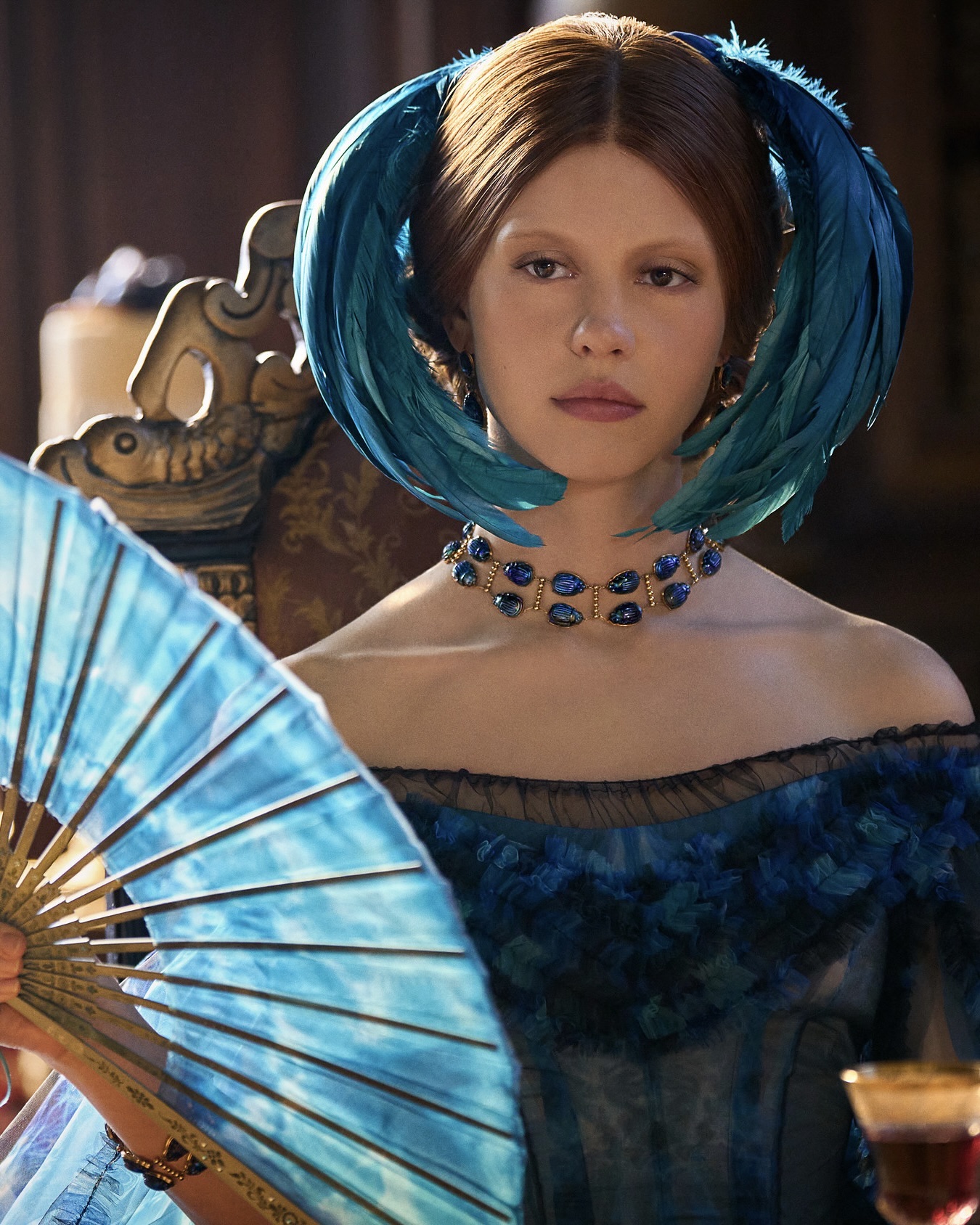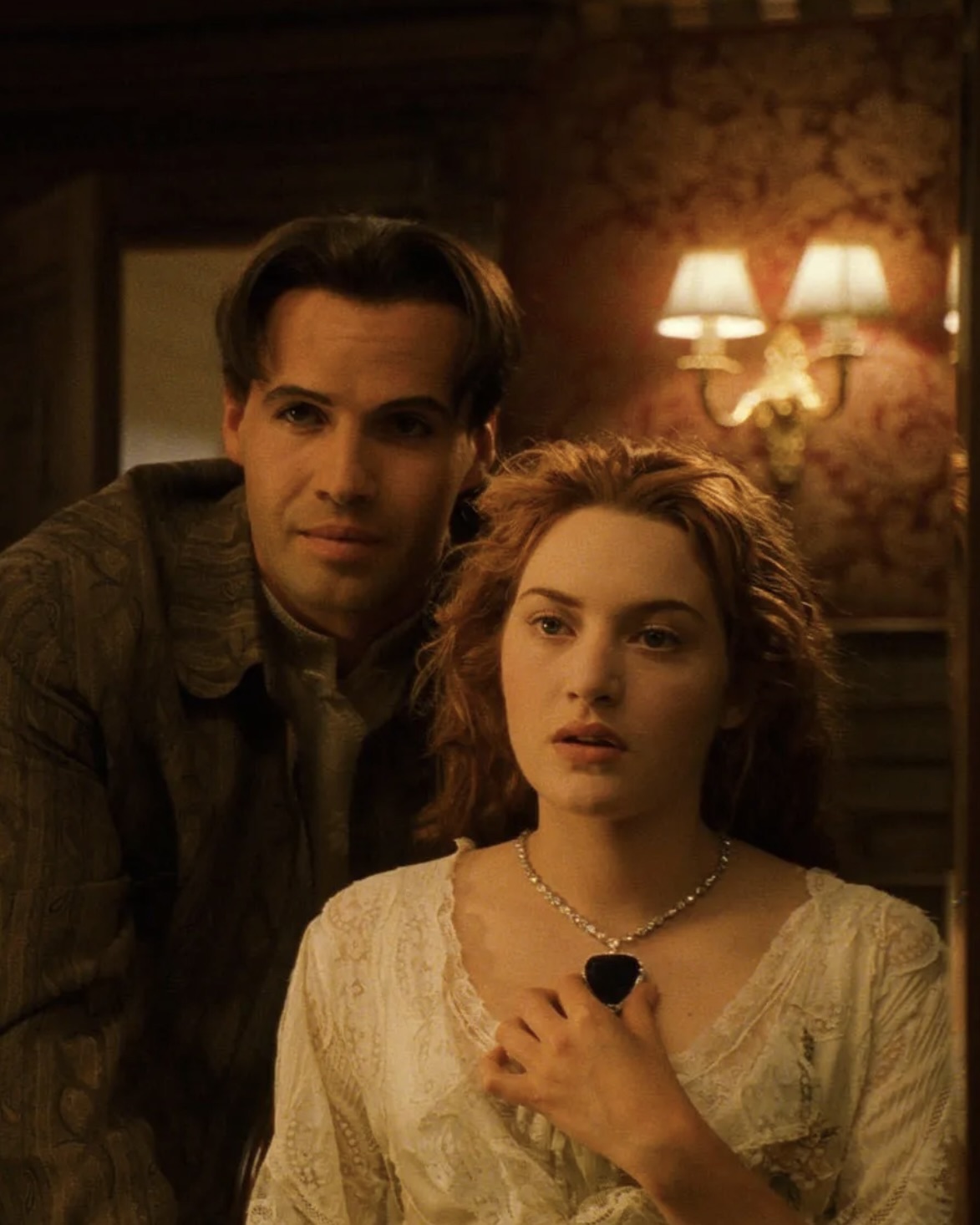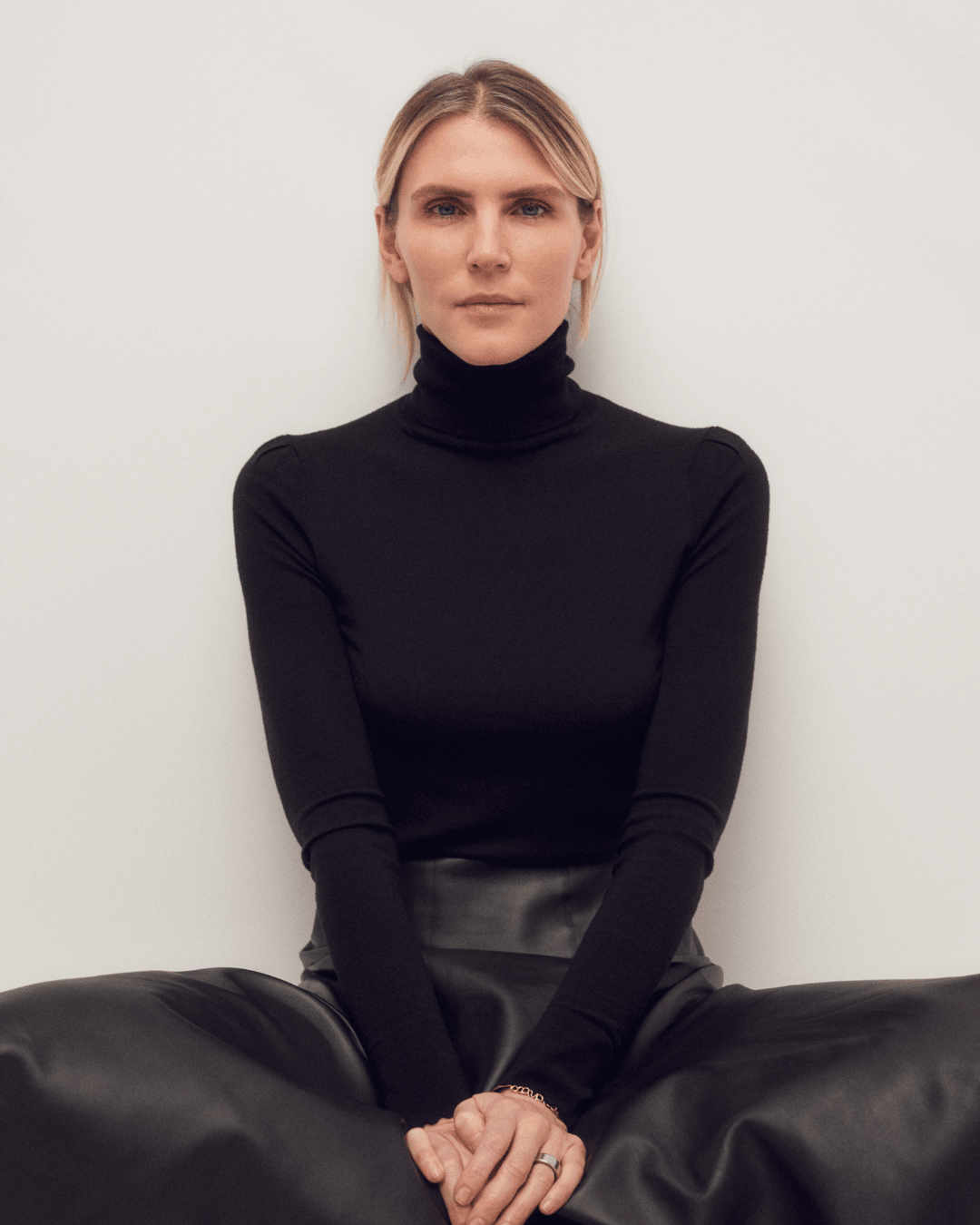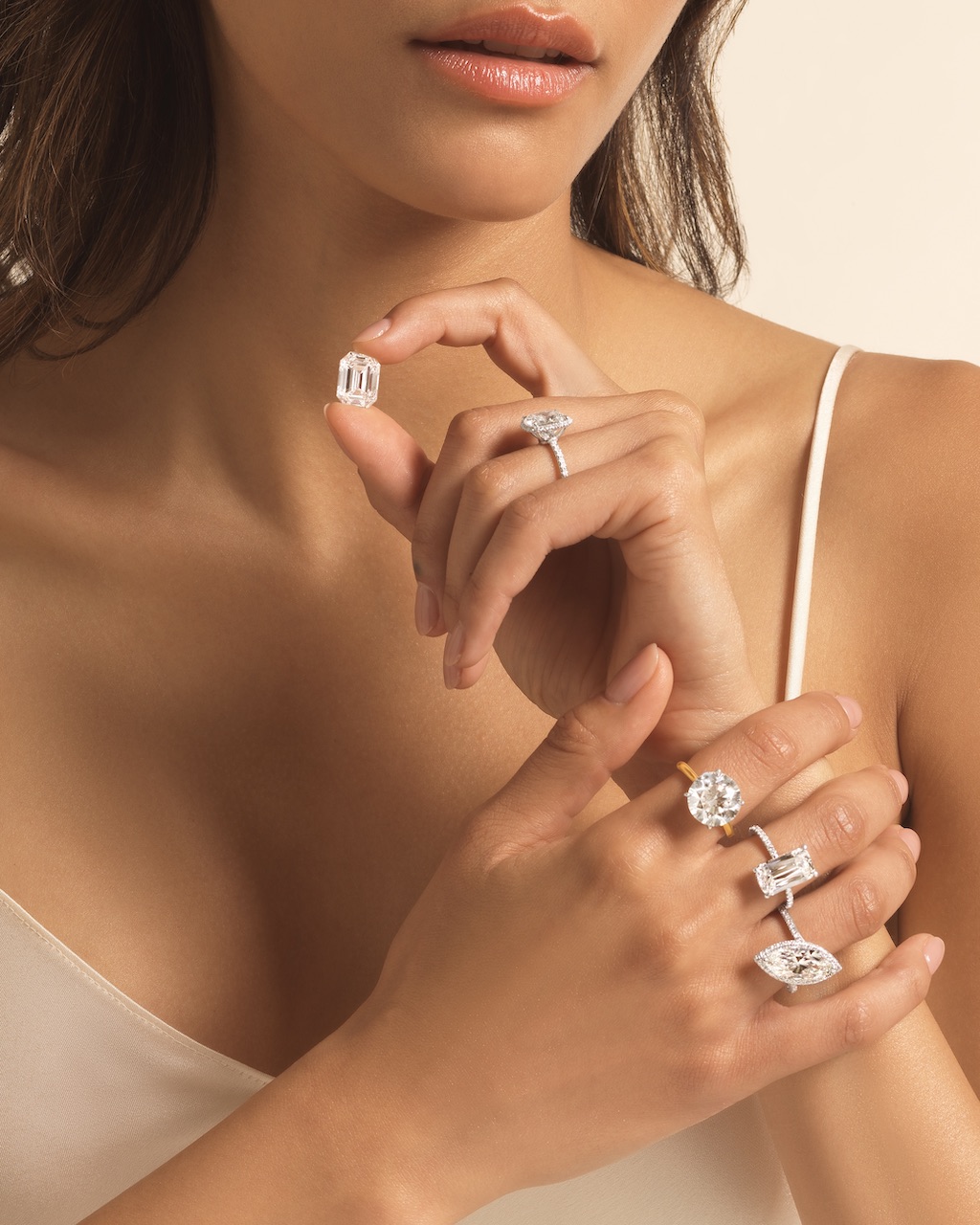Botswana’s Minister Bogolo Joy Kenewendo and How Natural Diamonds Make Her Nation Shine
How natural diamonds have shaped the life of Minister Kenewendo and the opportunities that diamonds hold for Botswana’s future.
Published: November 3, 2025
Photographed by: Mark Seliger
Written by: Sam Broekema

Botswana’s Minister of Minerals and Energy, Bogolo Joy Kenewendo, sees more than sparkle when she looks into a diamond, she sees the potential to transform the lives of millions in her country. She knows this firsthand, having witnessed Botswana develop into one of the fast growing economies in the world. Her mentors were the architects of the plan that harnessed the power of natural diamonds for the benefit of her people.
Educated all over the world through the largesse of Botswana’s support, she returned home to pay it forward for the next generation. Famously the youngest Minister in the African government under the previous administration, Minister Kenewendo has now taken on an even larger role and greater responsibility under President Boko. She shares with Only Natural Diamonds what drives her forward, and why this moment for natural diamonds is both so important and so hopeful for Botswana.
Meet the Author

- Sam Broekema is Editor-in-Chief of Only Natural Diamonds
- He has held roles including Fashion Editor, Executive Accessories Editor, and Market and Accessories Director at prestigious publications like Vanity Fair, Harper’s Bazaar, and InStyle.
Minister Kenewendo: Botswana’s “Diamond Baby”

Only Natural Diamonds: To start, could you explain what natural diamonds mean to you?
Minister Kenewendo: Life. By that, I mean that diamonds have given life to me as a Motswana, and to many other Batswana. Diamonds mean the opportunity to explore the fullness of my potential. Earlier this month, when we were visiting one of our cutting and polishing factories in Botswana, I realized that every time I look into a diamond, it’s like experiencing many other universes. It’s so incredible, when you look through a diamond, you can imagine the many lives that it has lived and the many years that it has existed. So, it’s not just ‘life’ insofar as the opportunities diamonds have created for me, but also how they capture and store life over many centuries. It’s brilliant. It’s wonderful. I truly just love diamonds. [laughter]
When you research various cultures, every one of them has a story associated with diamonds. Jewish women used diamonds as a means of passage when they were running away from the Holocaust. Indian women have used diamonds as protection should their husbands pass away, or their family faces hardship. In all these cases, diamonds have provided a way forward for families. We’ve seen this in many countries: when a husband passed away or lost their retirement packages, their jewelry became a means of sustaining their livelihoods. Every nation, every culture has a story about holding onto or trading a diamond at the right time to sustain themselves. If this has been true for so many centuries and generations, why would that change now?
Diamonds have given life to me as a Motswana, and to many other Batswana. Diamonds mean the opportunity to explore the fullness of my potential.

OND: How have natural diamonds shaped your life specifically?
Minister Kenewendo: Well, I first termed myself a diamond baby in 2019.
OND: Did you coin that?
Minister Kenewendo: I did. I first said this during a TED Talk in 2019. I’m a diamond baby because of the first woman minister in Botswana, Gaositwe Chiepe. She managed the negotiation with De Beers that created Debswana, which enabled us to have free health care, free education, and lives beyond our wildest dreams. It is because of her negotiation that diamonds have been able to transform our lives. I was born in a government hospital and I went to government schools. I tried a private school, but I didn’t like it so much, so I went back to the government school.
How Diamonds Funded a Generation’s Education

OND: What didn’t you like about the private school versus the government school?
Minister Kenewendo: I just couldn’t relate. I don’t come from an extremely privileged background. It’s not that my parents couldn’t afford a private school, but it just wasn’t the absolute best. I found more of a challenge in the government school. You were expected to study by yourself and to do things on your own. There was a level of independence that came with being in a government school versus the two weeks that I was in a private school. Afterward, I attended the University of Botswana and later, I studied at Pitzer College in California, all of this possible through government scholarships. I completed several summer programs at Harvard, then in Italy and all over the world.
Regardless of your background, diamond revenues have given us all a pathway to live the wildest possible lives that we can imagine.
All of these programs were sponsored by the Government of Botswana. Eventually I went for my masters degree in the UK. It was because I was working in Botswana and serving as an economic advisor to a Cabinet department that the British government saw potential and decided to sponsor me, but so did the Botswana government. Going on to work for the Botswana government has been one of the most fulfilling experiences of my life. It feels truly full circle to give back to the same institutions that gave me opportunities.
Regardless of your background, diamond revenues have given us all a pathway to live the wildest possible lives that we can imagine. Some of my former classmates went on to be traders in London and one is a famous filmmaker who went on to make a documentary for National Geographic.
OND: Did he work on the Okavango Delta project as well?
Minister Kenewendo: Yes. We’ve all gone through government schools and had similar backgrounds, and I don’t think any of us could have dreamt of the lives we’re living now. It’s all thanks to diamond revenues and how they were reinvested in our communities.
Minister Kenewendo’s Life In Service

I wanted to be a part of policymaking so I would be able to change the livelihoods of people from similar places. I wanted to make children aware that, regardless of where you come from, you can have a different life.
OND: Is this what drew you to government service, to give back or was there something else about service and economics that drew you in?
Minister Kenewendo: I wanted to be in the policy space. My village is very, very poor and it used to be termed extremely remote. No roads led there, and there was no electricity when I was growing up. I wanted to be a part of policymaking so I would be able to change the livelihoods of people from similar places. I wanted to make children aware that, regardless of where you come from, you can have a different life. Our generation is critical to Botswana’s development. We’ve benefited the most, and so it should be our responsibility to change what it means to be economically independent.
Diamonds and the Transformation of Botswana

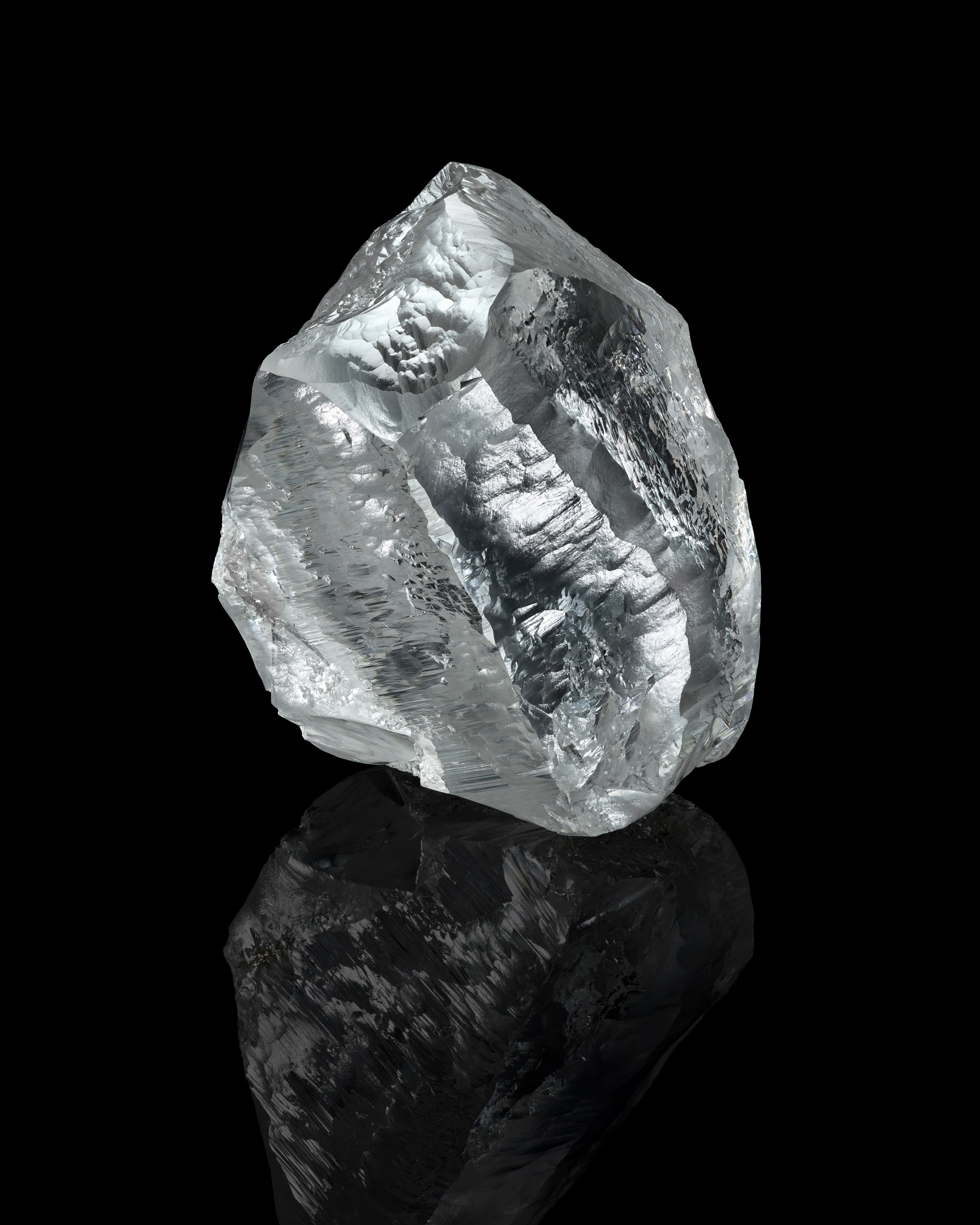
OND: What do natural diamonds mean to Botswana as a country?
Minister Kenewendo: Transformation, resilience, development, and real-life value. There’s an article that we all like to cite in Botswana. In 1965, when we were seeking our independence [from the UK], a Canadian reporter said, “Oh, yet another basket case coming onto the world stage, crying for independence and yet they can barely feed themselves. It’s going to be another one of those, where the whole international community is going to need to take care of them,” or something to that effect. It was a really harsh review of Botswana seeking independence because, at the time, we were the third poorest country in the world.
My mentor, Gaositwe Chiepe, the minister who negotiated the first diamond deal, used to say that the government then had only 24 pounds to its name. Why would anyone be crazy enough to leave the United Kingdom when there were only 24 pounds to pay civil servants? What were you going to do for all the teachers, nurses, and everyone else working for the government? But, as she said, it all worked out: a year later, diamonds were discovered, and three years after that, we began mining them.
A Path Enabled By Diamonds: Independence, Discovery, and a Nation’s Trajectory
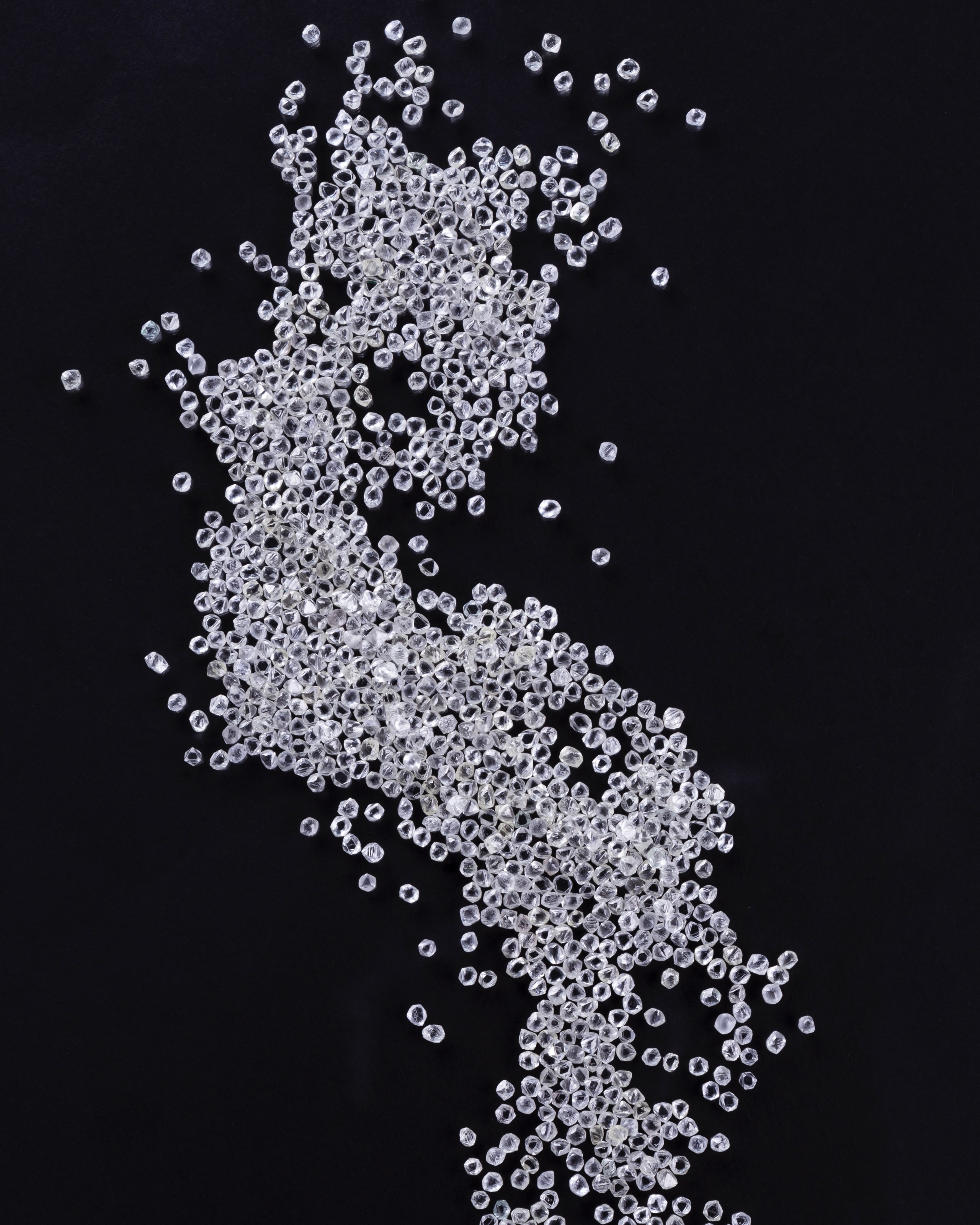
OND: I never realized that was the timeline, that they were found after independence.
Minister Kenewendo: Well, [laughter] it’s debatable when they were found. I met the gentlemen who discovered our diamonds. They knew for sure that we had diamonds in 1963, but they needed to do more exploration. So, in 1965, they actually looked and discovered that there was a sizable deposit. But in 1967, one year after independence, they said, “Well, we think there’s a lot more here.”
OND: Excellent timing, timing is everything.
Minister Kenewendo: Perfect timing. It could’ve completely changed the trajectory of Botswana. We know what happened in Sierra Leone and many other countries that had minerals. Zimbabwe and Rhodesia struggled to gain independence, had bloodshed. We got our independence because we were a barren land. It was just the Kalahari Desert and 5 cows. [laughter] Not literally, but only a few cows and 12 kilometers of paved road. Now, almost all the major roads in Botswana are paved. Over 80% of the country is electrified, and the literacy rate now exceeds 90%.
OND: The United States has a roughly 79% literary rate.
Minister Kenewendo: Well, the government has paid for free education in Botswana all the way through university, and now, some people will even be sponsored for post graduate programs and PhDs, depending on what their career requires.
How Minister Kenewendo Sees the Future of Botswana
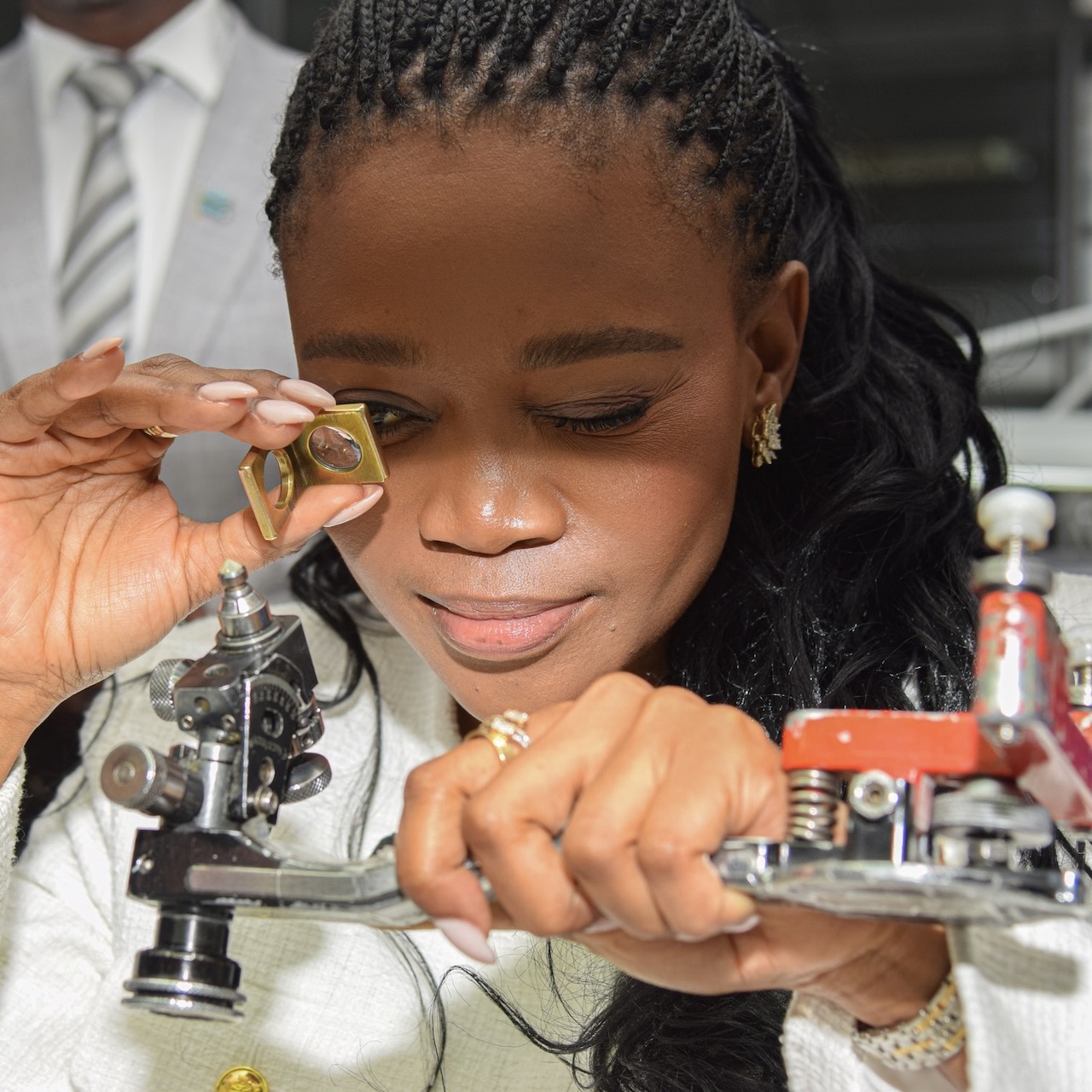
OND: Are there specific industries that you’re planning to support, such as engineering?
Minister Kenewendo: Yes. As Minister of Minerals and Energy, I am really big on STEM programs. I consider economics, which I studied, a science. I’m supporting the STEM fields more because we need more creatives, we need do-ers, we need makers, and innovators. What we will do with the Diamonds for Development Fund is to ensure that we are promoting businesses and innovators in that space.
I believe that next year we’ll start rolling out education for artisan-centered designers and jewelry designer and we will start to build the downstream in Botswana. While we already have the cutting and polishing facilities, we don’t yet have the jewelry industry. I think that’s where value lies, and the talent that exists in Botswana needs to be harnessed.
We are pulling together to ensure that Botswana regains its sparkle as a diamond producing country and beyond.
OND: It is very powerful to capture the entire journey of a diamond from the earth through the finished piece of jewelry.
Minister Kenewendo: I want to give a special shout out to the President of the Republic of Botswana. He has been a true champion of natural diamonds. The World Federation of Diamond Bourses recently awarded him as a Guardian of the Diamond Industry. He is truly deserving, as we have worked so well together in trying to find different strategies to resuscitate the diamond market and lobby for the zero-rating of diamonds in the United States, among others.
We are pulling together to ensure that Botswana regains its sparkle as a diamond producing country and beyond. They say that challenges determine what true leadership is. Together with the vice president, we are going to use the challenges facing the diamond industry. We are going to bring back the strength of our economy with our partners. I’m really thankful to have this support.
Minister Kenewendo’s Economic Outlook
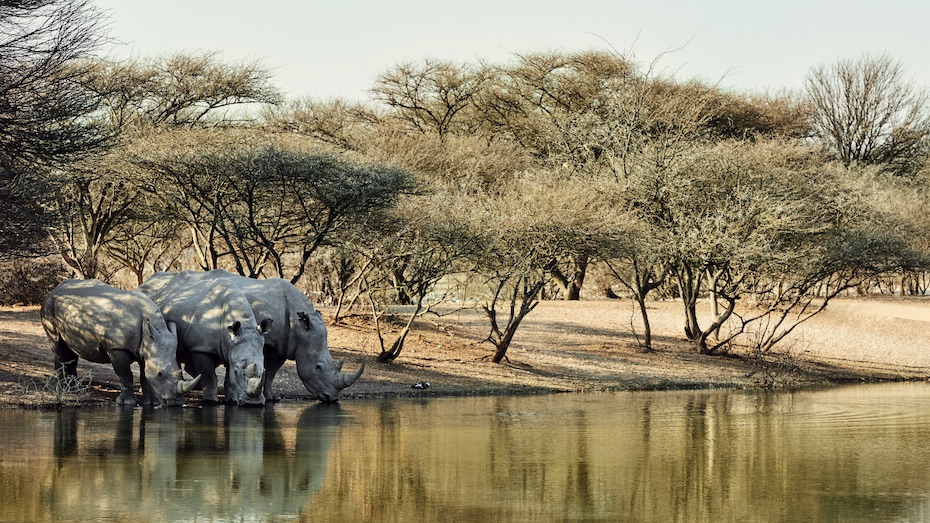
OND: How have you seen Botswana develop first hand because of natural diamonds?
Minister Kenewendo: Until roughly three years ago, Botswana had no debt. We had never asked for a loan from the World Bank; we powered our development through diamond revenues. We were so spoiled. Now, we’re having to manage a government without these revenues. It’s very new to us because, in our experience, it’s cyclical: you sell diamonds, you power the government, and everything runs in abundance. For many years, we’ve run budget deficits and yet diamond revenues have always come through, ensuring that we have a development budget to build schools, dams, pipelines, to electrify villages, and to send kids to school.
I keep seeing articles about how synthetics are challenging Botswana’s development. Yes, but we are all very much aware that this is a downturn in the market. Markets go up, they go down. It’s what we do when they are down, and how we prepare for the uptick [that’s important].
Even when diamond prices are in a funk, they still outperform other gemstones on the market. Synthetics, for example, have lost 90% of their value over the last 5 years. I’ve read that diamonds are losing their value; that they’ve lost 30% in 10 years. In 10 years, they are still a better store of value you can bequeath to the next generation.
What we want to ensure is that consumers are fully aware of what they are buying. There is a place for synthetic but they are not on par with natural diamonds, which took billions of years to form, and have been crafted by Mother Nature herself. The store of value that a natural diamond brings is unparalleled when compared to a synthetic.
The way synthetics flooded the market, we’re now beyond saying that they’ve lost 90% of their value. Now, we can basically give them away for free. If you want to go swimming with a little sparkle on your hand, you can have a replica of your diamond ring so that if you lose it, you won’t cry. You can still take nice pictures in the ocean.
We are starting to see markets coming back for natural diamonds. Numbers are rising in the Middle East, and even more so in Europe. We are also seeing encouraging numbers in the U.S.

OND: Taylor Swift helped a little bit.
Minister Kenewendo: Listen, [Cristiano] Ronaldo, Taylor Swift, the biggest stars in the world have really done a number for natural diamonds. What’s important to note is the sustainability of natural diamonds. I read an article recently that asked, “But doesn’t Taylor Swift care that synthetics are a lot greener?” But that is not true. We have to debunk [the myth] that synthetics are greener–they’re not. With our renewable energy push, diamonds from Botswana are moving closer to carbon neutrality.
We have game reserves in our diamond mines that foster nature preservation and conservation. We have some of the rarest animals in our parks because of the symbiotic relationship that we have with the earth. We take some of the diamonds, but we make sure that we care for those who work in conservancy. We ensure that there is rehabilitation as we mine. You will not find the same thing with a synthetic factory. You will not find rhinos in a synthetic factory. But you will find rhinos near Botswana’s mines.
We can protect these animals because our mines are highly protected environments. Wildebeests! I was just at one of our mines, and the wildebeests there are running around so freely because there are no natural predators there. [laughter] Because they are protected. And zebras. And it’s a sight to behold.
The Provenance and Pride of Botswana’s Diamonds
OND: Very well said. What makes diamonds from Botswana so special?
Minister Kenewendo: Firstly, the people who have cared for nature so well. We’ve cared for nature, and nature has chosen to gift us these precious stones. Diamonds are a natural commodity that need to be well protected and distributed across the country. That is something that has made the people, and the people have made it. It’s so unique.
We have also invested in the right innovations that bring out the best stones and retain the value of the diamonds. We’re continuously evolving to ensure our investments support conservancy and our progress toward carbon neutrality. We also make sure that we can trace our diamonds and tell the story behind each diamond’s provenance. There hasn’t been a single drop of blood associated with Botswana’s diamonds.
We are so proud that we are the longest-running democracy on the continent since 1966. No civil war, no war with any other nation, only complete peace and a democracy that carries the story of our diamonds. And our economy is growing fast. But it’s fast-growing because of diamonds.
Botswana’s Most Famous Diamond Discoveries
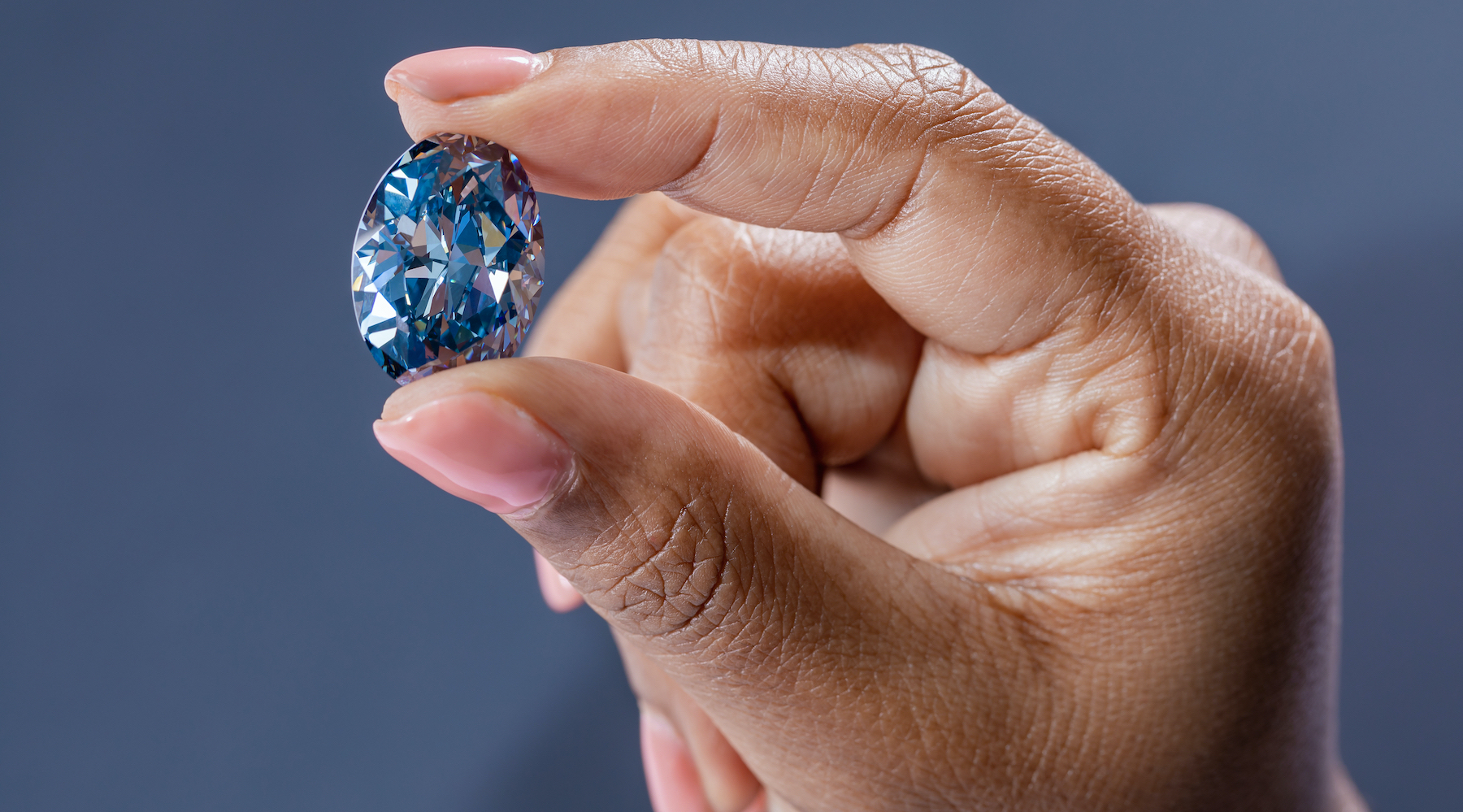
OND: Can you share some stories about some of the impressive diamond discoveries in Botswana? As many people know, Botswana is the producer of the greatest amount of diamonds by carat weight in the world.
Minister Kenewendo: Yes. In the world by value. I think the most special diamond in the world is the Okavango Blue. It’s like looking into the deep blue sea. Stunning. Then of course, the 1,098-carat diamond we share with De Beers, and then there’s the 2,488-carat, and most recently another impressive find of 2,492 carats. I mean, big stones. These stones rival the Cullinan, one of the world’s largest diamond discoveries that sits in the Tower of London. But these stones are sitting in our safes in Botswana. You can’t even enter, just in case somebody gets carried away with an idea.
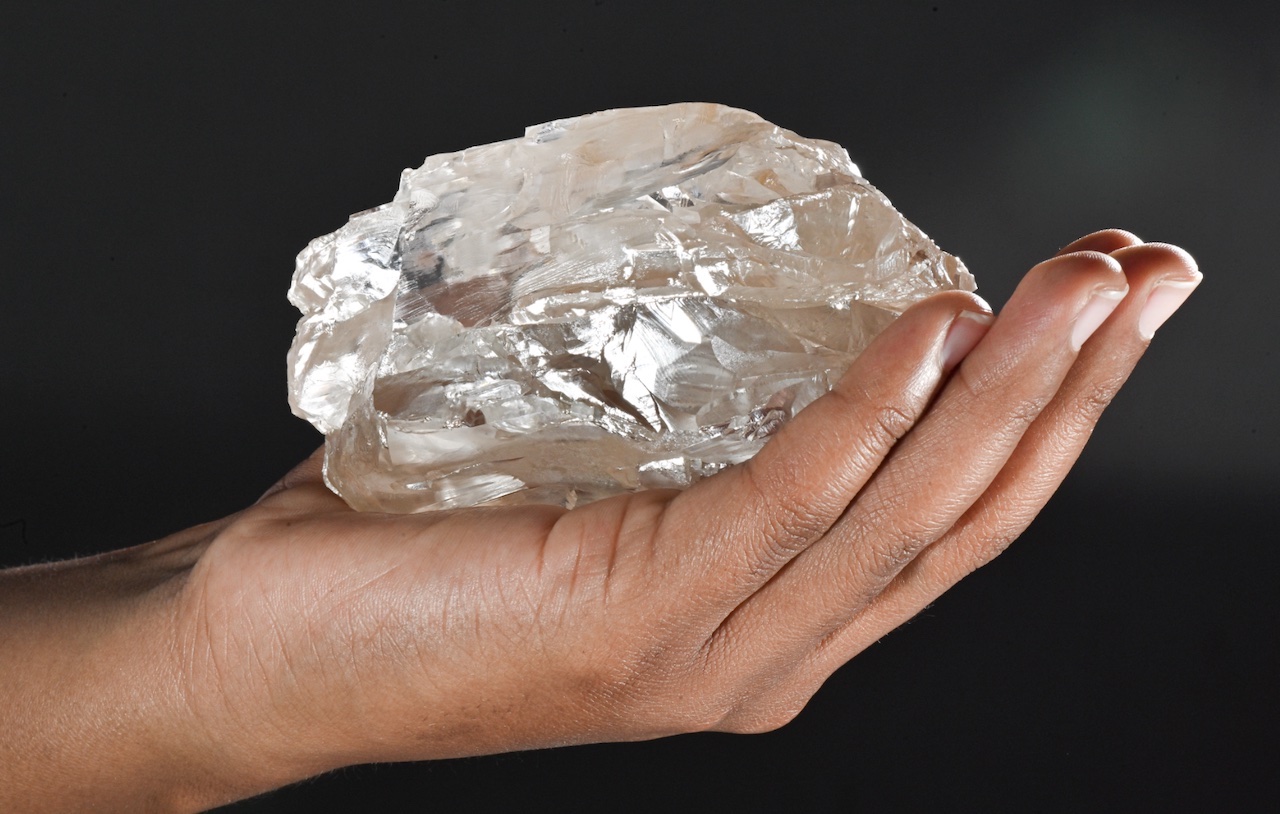
OND: Do you ever let yourself in, just to spend time alone with them?
Minister Kenewendo: I wish I could say that. But I do visit. I visit the Diamond Trading Company of Botswana often, I like taking visitors there so they can experience it firsthand. Just about two weeks ago, we hosted the Minister of Mining from South Africa, and he couldn’t believe the variety of diamonds we had. We wrote his name in diamonds. It was just spectacular.
Minister Kenewendo’s Multifaceted Mission
OND: Obviously, you’ve already done so much previously as Trade Minister, what are your goals in this administration as Minister of Minerals?
Minister Kenewendo: Since I hold two plus portfolios in minerals and energy, I want Botswana to use one to catalyze another. In the same way that we’re saying the renewable projects are going to bring our diamond production to carbon neutrality, I want our diamonds to bring electricity to those that haven’t had it all these years. I want our diamonds to catalyze more development, particularly in the hardest-to-reach places. We are asking our partners seeking contracts with the Okavango Delta Company to commit to adopting a village and bringing off-grid and DSE solutions to those communities. Our goal is not only to grow the diamond industry but also the broader mineral economy and its contribution to GDP and to employment.
Most importantly, we’ve been saying that we’ve been mining for over 58 years, but we don’t have a mining industry; one that supplies the lubricants, flocculants, and machinery that go into mining. Now we are going to be so deliberate about using the mines as anchors for industrial development. The President recently approved it and will share it with the wider public. It’s about value chain and supply chain development, supply chains that ensure we bring jobs and industries into Botswana and export them. We can’t boast about being one of the largest and best mining jurisdictions in the world if we do not have an industry that supports us. It only makes sense that we champion mining industrialization, and that’s something I am working on around the clock. Just 24 hours ago, we reopened a mine. I was in Botswana wearing PPE and steel toed shoes, I was talking about nickel, cobalt, and downstream processing, and how we want to create a metallurgical hub there. Then, 24 hours later, I was wearing diamonds, and decked out in a gown and heels for the Jared film premiere. It’s the juxtapositions in this role that keep it interesting but also remind me of the broadness of the role, and how it plays in the economy. I hope that we can strengthen the role that mining plays in the Botswana economy. While some argue we should diversify, I think there’s still potential for diversification within mining itself that we can make to catalyze the rest of the economy.
What Sustainability Means for Botswana’s Future

OND: How do you see sustainability playing a role in the future of Botswana’s diamonds, and also Botswana’s mining industry as a whole?
Minister Kenewendo: Sustainability starts with the people. We must amplify the voices of women, children, and young people. We must create a space that nurtures dreams and creates opportunities for development and innovation.
From an environmental perspective, we are already there. A third of our land mass is reserved for conservation, a third! We have the largest herd of African elephants in the world. We have the largest inland delta in the world. These are things we usually don’t talk about, but we should be bragging about, because you will not experience a better safari than in Botswana. So, what could be better than to buy a Botswana diamond, then go on honeymoon in Botswana? It is an organic luxury.
From an environmental perspective, we are already there. A third of our land mass is reserved for conservation – a third.
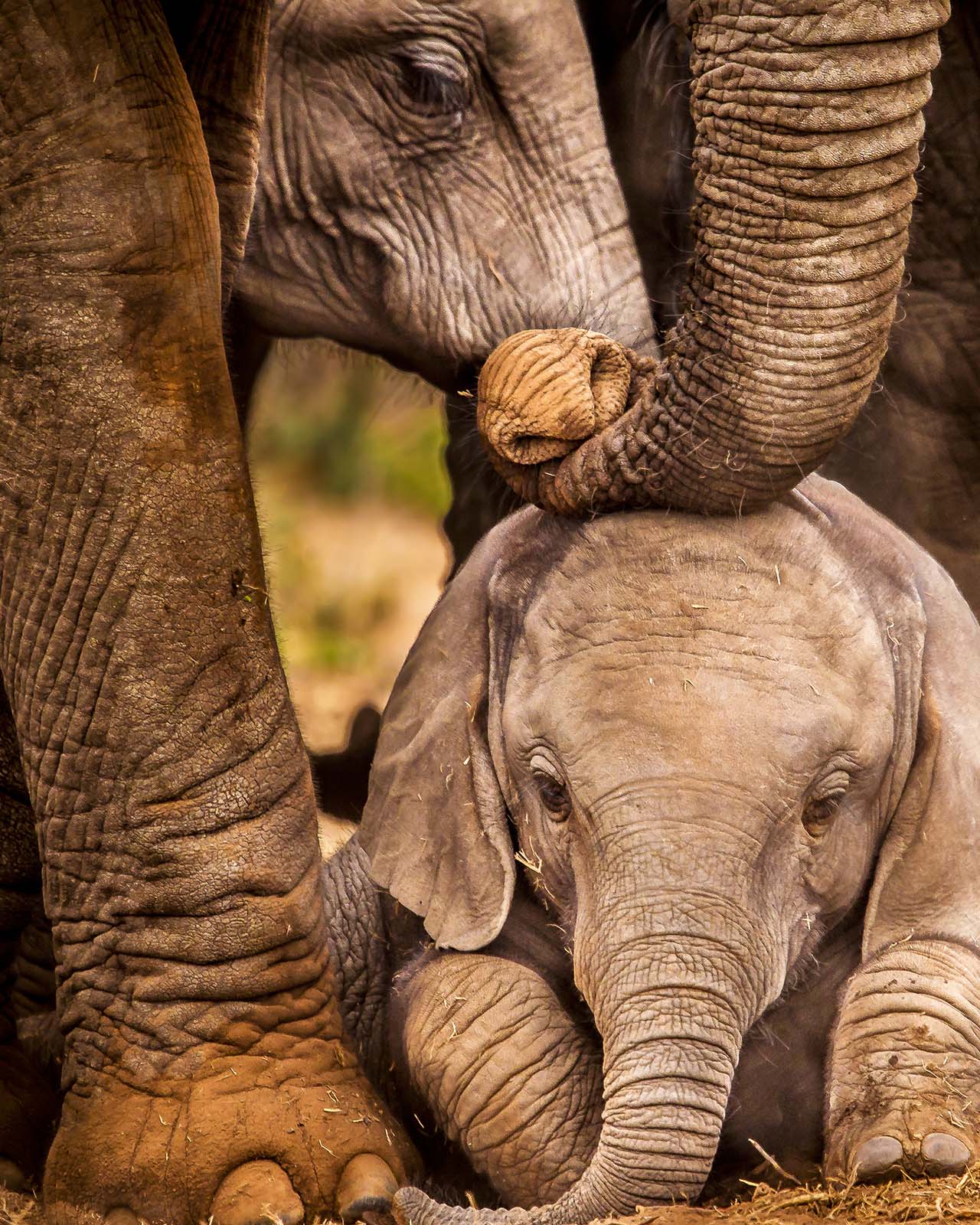
OND: Full circle.
Minister Kenewendo: That’s what the House of Botswana is about, sharing how organically we have kept and produced our diamonds, and our tourism. We ethically source and we are responsible miners, and are committed to being sustainable traders of our diamonds, as well.
What Diamond Mining Really Looks Like
OND: What do you want people to know about diamond mining that is often misunderstood?
Minister Kenewendo: First, that diamond mining is methodological. For those who have been to museums, a diamond mine looks like the Guggenheim. It is so well curated and methodologically built. There is no child holding a pick and going into a hole somewhere. No. Everything is done with enormous machinery. It’s not even underground; it’s all open air, as is the case for the majority of mines in Botswana. You can look down from any point and see the entire mine.
We’ve had women who were once cleaners in the mine who now drive heavy-duty Kimberlite trucks. They joke that now they work in an office because the truck is filled with light. They are built by Mercedes Benz and have air conditioning. I know that people imagine manual labor when they think about a mine. These are hardworking, decent people in the mines who simply want to provide for their families in a structured and safe manner. That’s what diamond mines offer. We offer natural diamonds to the world for all those who want to share in the promise of love and the promise of a future with collective prosperity.
Photographer: Mark Seliger
Stylist: Jason Rembert
Hair: Yusef Williams
Makeup: Pascale Poma
Manicurist: Gina Edwards

